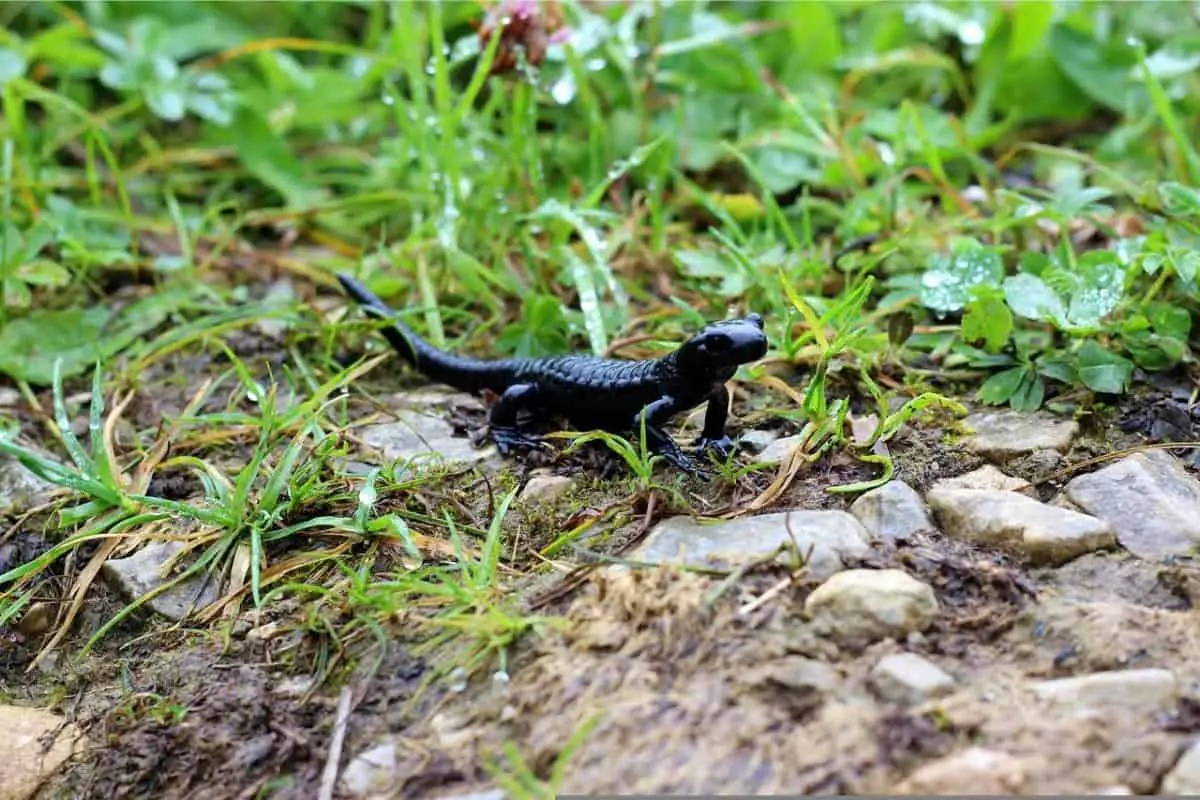California, also known as the golden state, is undoubtedly one of the most biodiverse states in North America. With its temperate climate and ample rainfall, the state is home to a wide variety of plant and animal species. One group of animals that is particularly diverse in California is the salamanders.
With approximately 60 species of salamanders in California, these amphibians can be found in a variety of habitats ranging from coastal marshes to high mountain streams and lakes. Many of the state’s salamanders are endemic, meaning they are found nowhere else in the world.
Salamanders in California
Salamanders in California are some of the most diverse in the world. From the California newt to the Arboreal salamander, these creatures come in all shapes and sizes.
Below are 9 common species of salamanders in California that you might encounter on a hike or during a visit to one of the state’s many parks. Enjoy!
1. Arboreal salamander
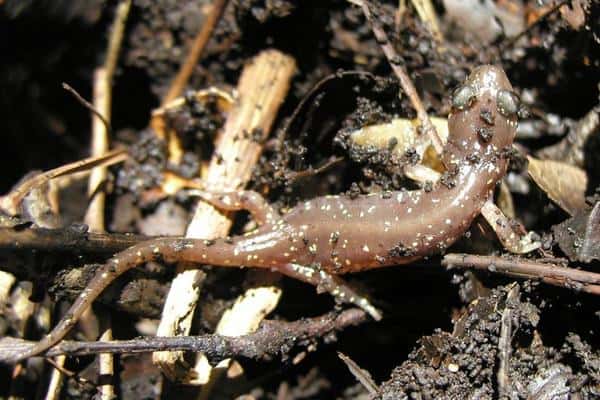
Scientific Name: Aneides lugubris
Arboreal salamander populations are found along the North Coast of California, in the Sierra Nevada, and south to Ventura County. The species is also found on San Miguel Island and in coastal live oak woodlands.
They eat a variety of small invertebrates, including spiders, mites, and insects. Arboreal salamanders have adhesive toe pads that allow them to climb vertical surfaces. They can often be seen climbing high into redwoods and Douglas firs in search of food.
2. Rough-Skinned Newt
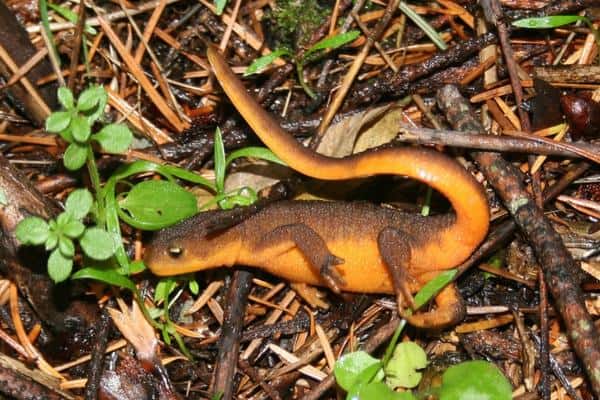
Scientific Name: Taricha granulosa
The rough-skinned newt salamander is black or brown with an orange underbelly and has rough, bumpy skin, hence the name. The newt lives in damp forests and can often be seen crawling on logs or rocks near streams. It’s found in many parts of California, including the northern coast and the Sierra Nevada mountains.
The rough-skinned newt is sometimes called a “warty newt” because of the bumps on its skin. These bumps contain toxins that make the newt poisonous to predators. If a predator tries to eat a rough-skinned newt, it will usually vomit or have convulsions and die.
3. Sierra Nevada Ensatina
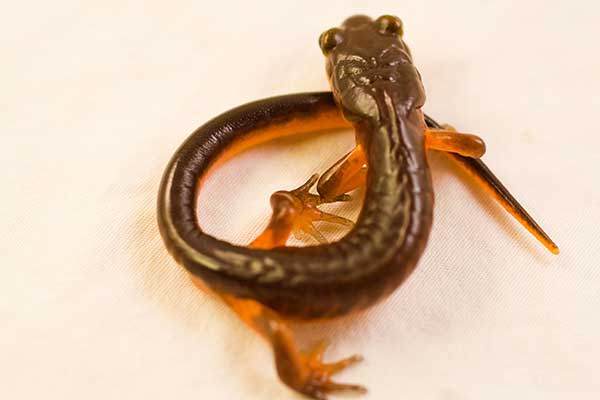
Scientific Name: Ensatina eschscholtzii platensis
Sierra Nevada Ensatina salamanders are found in the Sierra Nevada mountain range from southern Oregon to southern California. In California, they are found in the Santa Cruz mountains and along the coastal region.
The Ensatina salamanders often have confinement at the end of their tails, which produces a toxic, milky-looking liquid from the poisonous glass in their tail. They use this toxin to protect themselves from predators. Although the toxin is not lethal to humans, it can cause irritation and swelling if it comes into contact with your skin.
4. Mt. Lyell Salamander
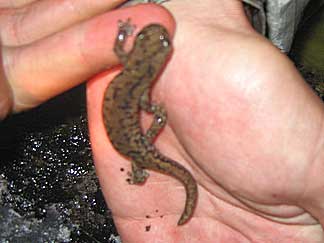
Scientific Name: Hydromantes platycephalus
The Mt. Lyell Salamander is the largest member of the plethodontid family. This salamander is gray with brown or black spots running down its back. It can grow up to 4 inches long, with the female Lyell Salamander often larger than the male.
It’s found only in a small area around Mt. Lyell in Yosemite National Park, California. The Mt. Lyell Salamander eats a variety of small invertebrates, including insects, spiders, and snails. They are active hunters, stalking and ambushing their prey. Although they don’t have lungs, they absorb oxygen through their skin.
5. Redwood salamander
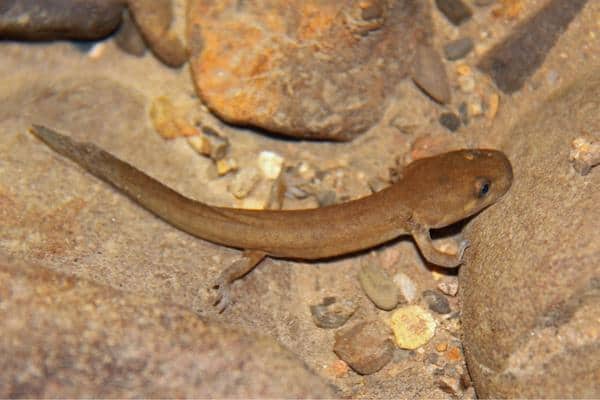
Scientific Name: Dicamptodon ensatus
The Redwood salamander, also known as the California Giant Salamander, is among the only two species of salamanders in the world that descants. This gigantic brown and dark-spotted amphibian lives in the coast redwood forests of primarily Napa, Mendocino, Santa Cruz, and Sonoma, Counties.
Redwood salamanders are nocturnal and live in moist, shaded areas under logs, rocks, or leaf litter on the forest floor. These Salamanders require cool temperatures and high humidity to survive. Redwood salamanders are unique because they possess both gills and lungs as adults. This ability allows them to stay underground for long periods of time if the surface conditions are not ideal.
6. California Tiger Salamander

Scientific Name: Ambystoma californiense
The California Tiger Salamander is one of the most widespread and abundant salamanders in North America. It’s found throughout California, except in the desert regions and parts of Nevada, Oregon, and Baja California.
The California Tiger Salamander is usually light brown to yellowish with dark brown or black stripes running down its back. Adults can grow to be 10 to 14 inches long and eats a variety of invertebrates, including insects, spiders, and snails. They spend most of their time underground in burrows or tunnels, emerging only during the rainy season to breed in ponds and streams.
7. Santa Cruz Long-Toed Salamander
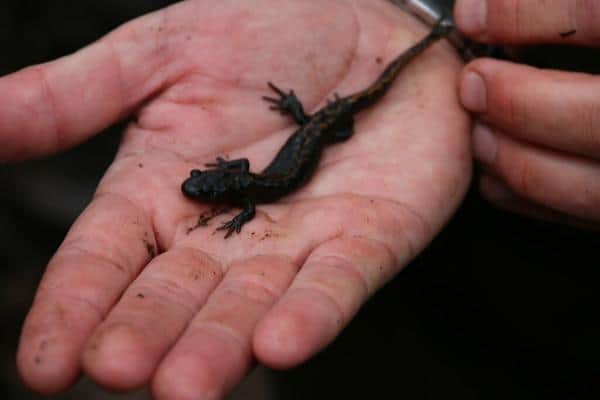
Scientific Name: Ambystoma macrodactylum
The Santa Cruz long-toed salamander is found in Central and Northern California. It is a nocturnal creature, so it is most active at night.
You can often find it near water sources such as ponds and streams. This salamander species can grow up to five inches in length and is characterized by its long toes.
The Santa Cruz Long-toed Salamander is not poisonous and is actually quite docile. It feeds on small insects and other invertebrates such as worms, slugs, and snails.
In California, the Santa Cruz Long Tailed Salamander is found in the Santa Cruz mountains. These salamanders are sometimes called “spring lizards” because they are often seen during the springtime.
8. Inyo Mountains Slender Salamander
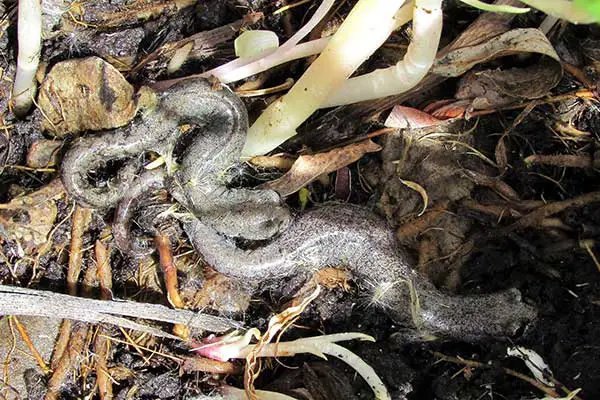
Scientific Name: Batrachoseps campi
This is a salamander species found in the Inyo Mountains of California. It is a small species of salamander, only growing to be about three inches in length. It is a slender creature with smooth skin and a long tail.
The Inyo Mountains Slender Salamander can be silvery, dark brown-black, or reddish in color with a light-colored belly. This species of salamander is not poisonous, and it feeds on small insects. It is often found near water sources such as streams and ponds and can live for 7- 10 years.
9. California Giant Salamander
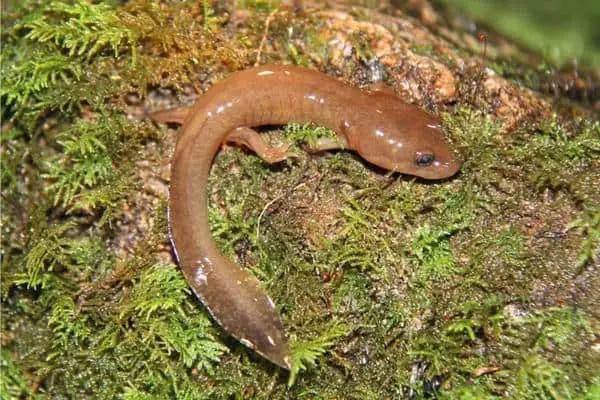
Scientific Name: Dicamptodon ensatus
The California Giant Salamander is found in Siskiyou, Shasta, Mendocino, and Trinity counties. They are also found along the coast of California, from Humboldt County to Marin County. This salamander is the largest terrestrial salamander in North America and can grow up to 14 inches in length!
They are dark brown or black with a light-colored belly and have distinctively shaped heads with large eyes. These salamanders are also known to be toxic; their skin secretions can cause irritation and burning if they come into contact with mucous membranes or an open wound. However, they are not considered to be dangerous to humans.
